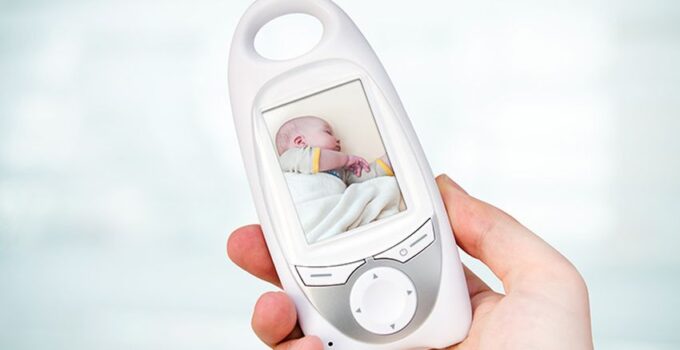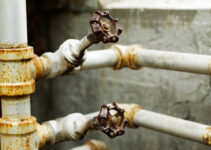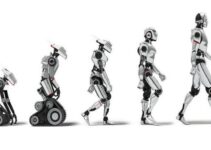Every parent wants the best for its child, so buying a baby breathing monitor is very smart choice. Baby breathing monitors helps you to check if baby is sleeping, when he need a feed or even if he wakes up during the night. In other words, baby monitors are like eyes at the back of your head because they are watching on your baby when you have some other things to do or during sleeping.
It is very wise decision to purchase one of them, so in the further text we will consider why do we need baby monitor, what is the perfect time for using that, how to choose the right one, some of the best models on the market, useful tips, but also drawbacks of these device.
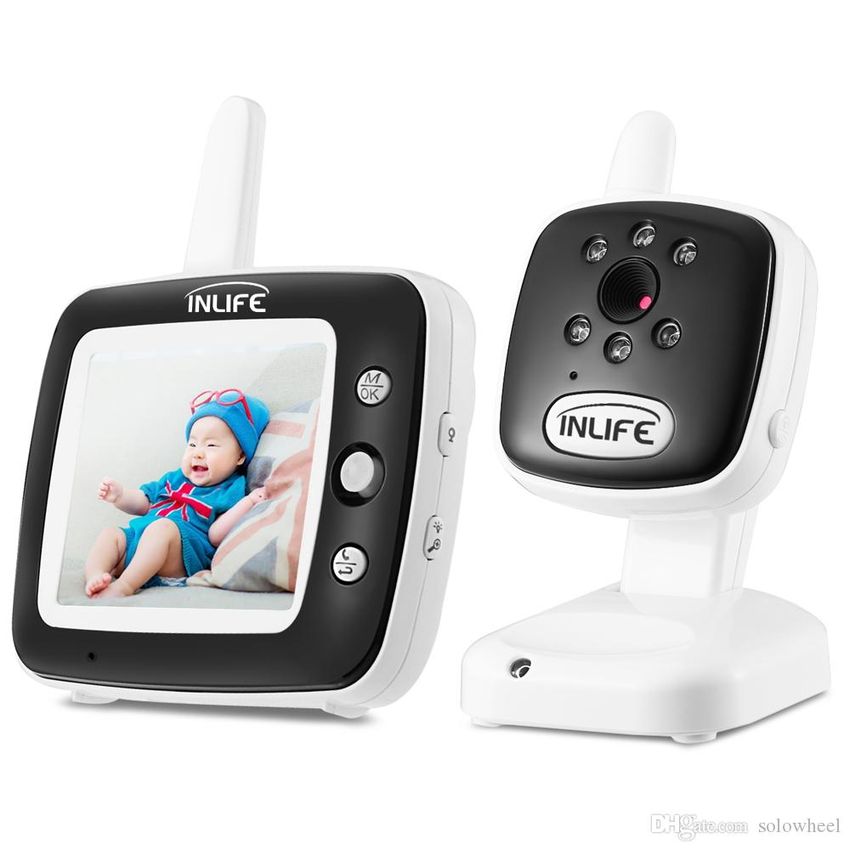
source:amazon.com
Page Contents
Why do we need baby monitors?
The pace of breathing of the newborn is not constant – they can breathe too fast or too slow, even with pause. Most of the modern baby monitors have alarm, if there is case of deviation or baby is not breathing for 20 continuous minutes, so it can be very useful devise. That fact usually makes parents very stressful, so buying a baby monitor can also reduce stress level. In every second you know what is happening with your baby.
When is the perfect time for using this?
There are different purposes of baby monitors on the market. Some of them are of children who are healthy and normal, but also there are specialized baby monitors for babies and toddlers with some diseases. Before buying, the best option is to as for doctor’s advice for a monitor. Some of the cases when monitors are really needed are:
– when baby has absence of breathing, also known as “Apparent Life Threatening Event” (ALTE), or if baby needs resuscitation. Then doctor can recommend some of the apnea monitor, to keep a track on the baby’s breathing and heart rate;
– if baby was born premature and has a chronic lung disease, sleep apnea, persistent episodes of breathing pauses or slow heart rate for a few weeks;
– if baby has rare medical condition that can cause severe breathing problems.
How to choose the right one?
We saw some of the purposes of baby monitor, but there is a question – how to choose the right one? As we said, doctor can give an advice which monitor to buy, as nowadays there are a lot of different types of monitor on the market.
1. Movement monitor
These monitors are designed to alert you if baby is not moving for a present time frame. These monitors are very sensitive and can detect even the slightest of movements, and give an extra level of safety. There are two types of these monitor, different by location of the sensor.
Mat monitor – They are also called “Under the mattress” monitors because they are hidden underneath the baby’s bed, in the cot. The alarm on the device sounds if there is a pause in the baby’s movements for 15 to 20 seconds. One of the disadvantages of this device is that it is not beneficial while traveling, it is usually used on flat surfaces.
Movement monitor – This monitors are very useful because they can be used everywhere, even while traveling! They are attached with a tape to the baby’s tummy or diapers of clothing. The sound of alarm starts if there is no movement more than 20 seconds.
Some of the advantages of movement monitors are:
-it cannot be easily fitted after the baby falls asleep. Very often it could be displaced due to bedtime preparations and trigger a false alarm;
-it is not convenient to use when baby begins to roll over or crawl. It could be very difficult to hear if the baby rolls onto it belly.
2. Heart and breath monitors
As the name of the monitors said, these two monitors are specialized for heart and breath control. The heart monitor registers chest movement and the heart’s electrical activity through two electrode dots attached to baby’s chest. There is a heart alarm which is set at a heart rate of 60 beats per minute for older babies and 80 beats per minute for a young one. The breath monitors are portable and come with a rechargeable battery. Their alarm sounds when there is prolonged pause in breathing or apnea or delay of more than 20 seconds between two breaths.
3. Oxygen measurement monitors or oximeters
These kind of monitors is usually used at hospital and rarely at home conditions. The alarm on these device sounds if the oxygen percentage falls below the limit, mostly around 92%.
Useful tips
When you are purchasing a baby monitors, you should consider some of the options the monitor obtains.
– The main purpose of the monitor is to alert you when the baby is in danger;
– The monitors are made for showing the two vital signs of the baby – heart rate and breathing
– The best monitor shouldn’t wake you up with false alarms;
– It has to help you to hear what is happening in baby’s room;
– Some of monitors also have cameras, so you can watch baby, as well;
– Before the purchasing, check out if the breathing monitor includes audibility, area coverage and battery longevity.
The most popular models on the Market
1. Snuza Hero SE Baby Movement Monitor
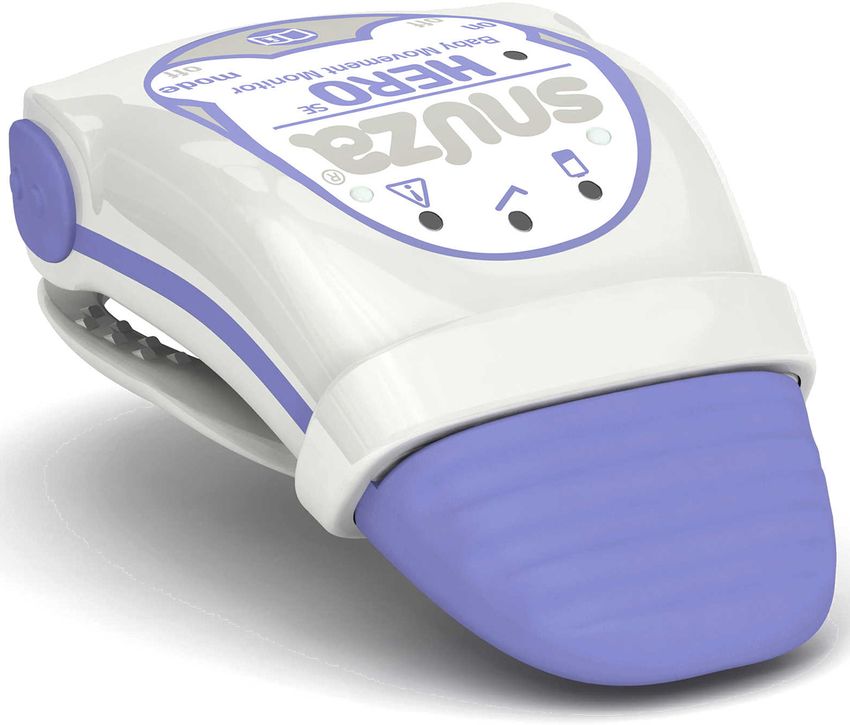
source:albeebaby.com
This portable travel friendly monitor can be attached over the waistband of the baby’s diaper. It has unique stimulation feature vibrates if the device senses no baby movement for 15 seconds. If the baby does not move within 5 seconds of vibration, alarm starts with activation. There is no wires or cords, so it’s totally harmful for baby.
2. Snuza Trio Plus Baby
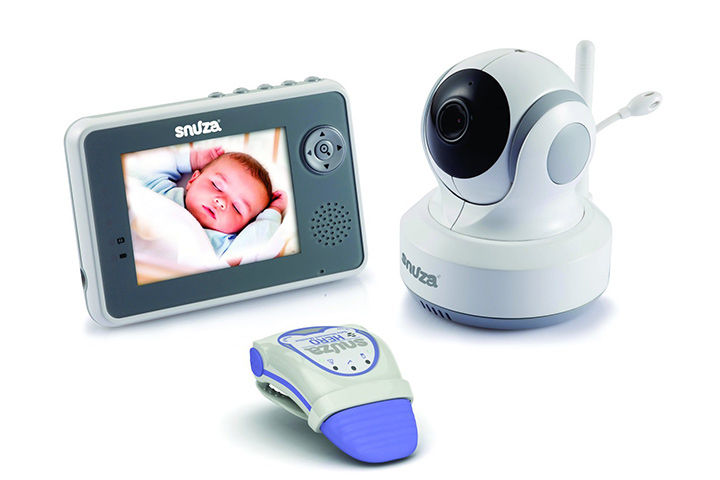
source:momjunction.com
This is extended version of the Snuza Baby Monitor which obtains Movement Tracking, Room Temperature Display, 2-Way Audio and Live Video Feed.
– The product is three-in-one baby monitoring system;
– The Snuza Video has an option with crystal-clear full-color video and auto-on infrared night vision;
– 2-Way audio system provides you option to talk back to your baby;
– It obtains 3.5-inch Color Display, built-in microphone for talk-back, built-in speakerphone, camera pan/tilt controls, built-in microphone, volume controls;
– Additional featured are voice-activation function, room temperature alert, digital zoom function, baby feed timer.
3. Babysense Hisense 5S Baby Safe Infant Movement Monitor by Babysense
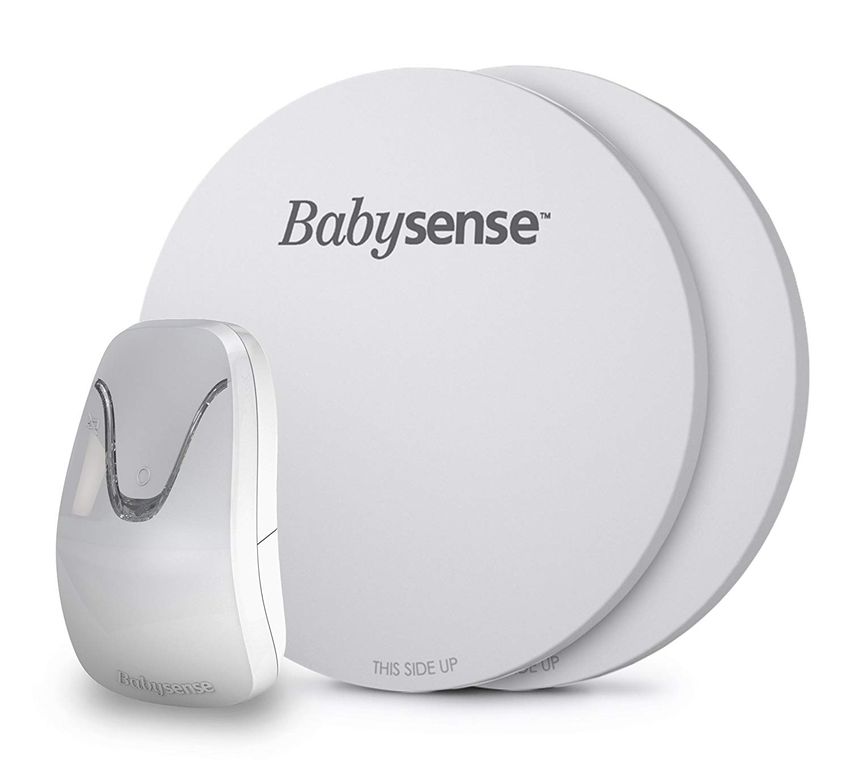
source:amazon.com
– These type of monitors detect the cessation of movements of babies;
– The device detects the slightest movements of the baby during sleep, through the mattress, thanks to sensor pads placed between infant’s crib and mattress;
– If there is no movement for over 20 seconds or movement rate is below 10 micro-movements per minute, alarm starts with activation.
4. Angelcare Video, Movement and Sound Monitor
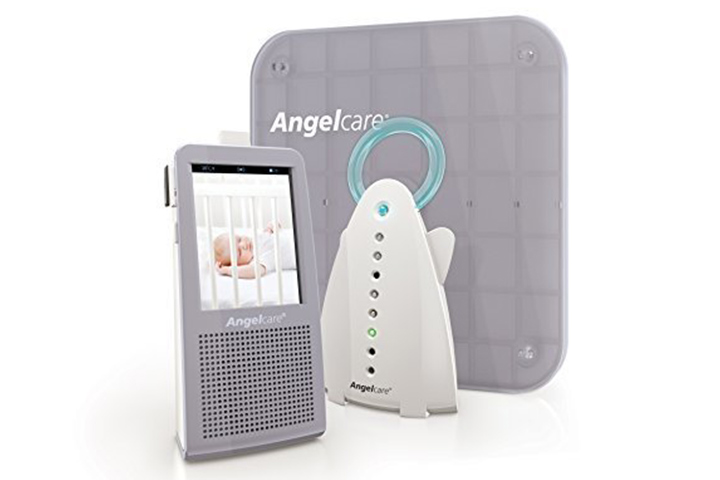
source:momjunction.com
– In only one device are all movement, sound and video monitoring systems;
– Under-the-mattress Movement Sensor Pad senses and sounds alarms there is no movement for 20 seconds;
– Color Video Transmission with live baby video monitor;
– Infrared camera with day and night vision;
– LCD Touch screen.
5. Baby Monitor for Breathing and Movement
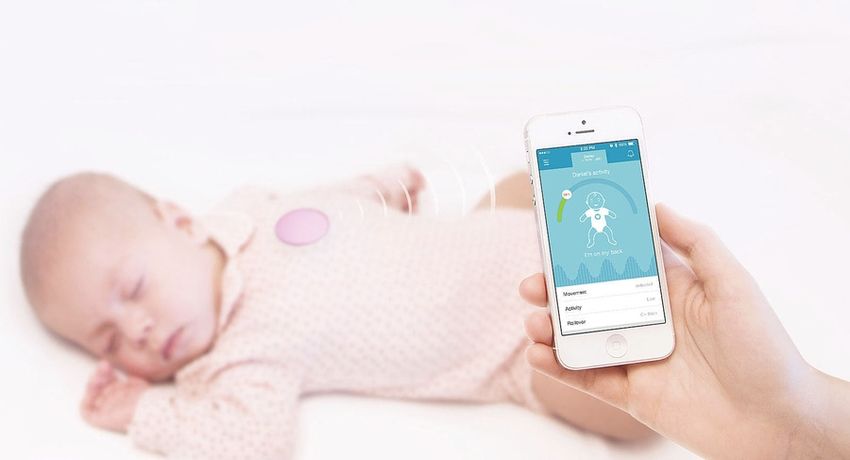
source:trends.medicalexpo.com
– This device uses low energy and is CPSC compliant, FCC approved;
– Alarm starts with there is some unusual activity – fall, blockage, breathing problem;
– Compatible with iPhone 5 and Android devices with 4.4 software and Bluetooth 4.0;
– It can be extended through the free MonBridge app for Android devices;
– MonBaby’s technology sends live updates of baby’s activities and breathing to your smartphone, 5 times every second.
6. Wi-Fi Smart Baby Monitor IPC100-with Digital Monitoring of Breathing and Heart rate by Dorme’ Baby
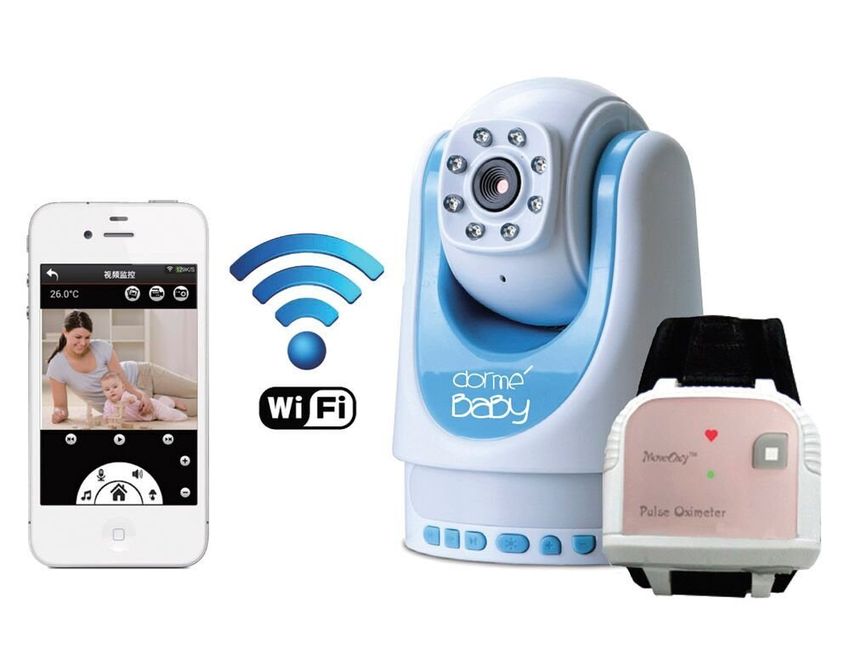
source:amazon.com
– This device is iOS & Android Compatible;
– Its design provides audible alerts when the baby’s oxygen or heart rate level exceeds pre-set safety limits;
– It can be attached to baby’s foot, without making any discomfort.
7. Mimo Smart Baby Breathing & Activity Monitor
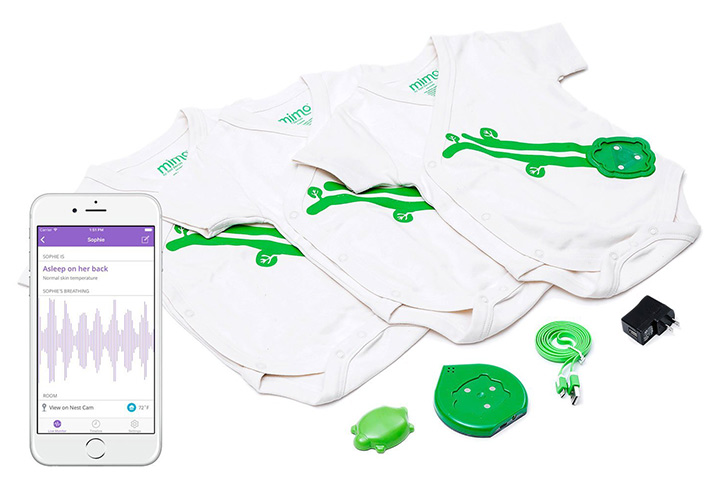
source:momjunction.com
– These monitor can identify the slightest baby’s chest movement and helps you to know the breath pattern;
– The alarm starts when there is a problem with temperature, body position, customizable breathing and wake/sleep alerts, all on your phone;
– As it is available on iOS and Android devices, you can hear your baby’s crying on your cellphone;
– They are machine-washable and 100% soft cotton.
8. Levana Oma Powered By Snuza Portable Baby Movement Monitor With Audible Alarm
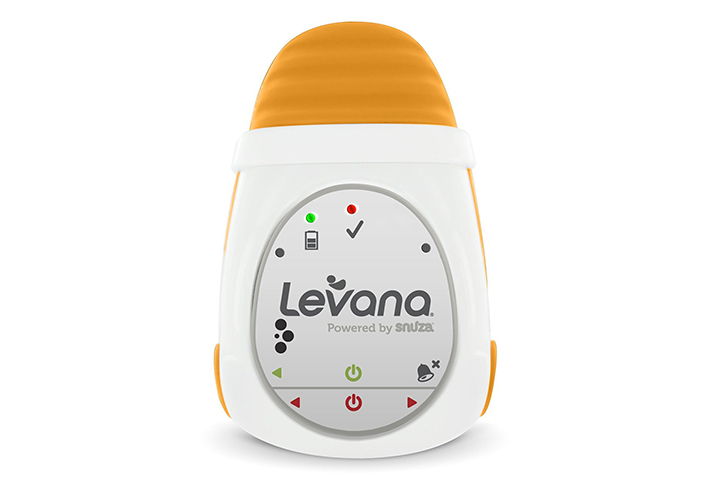
source:momjunction.com
– This movement monitor is clipped onto baby’s diaper;
– It works with batteries;
– If there are some abdominal movements are detected, the movement indicator light will flash orange and sound a warning tone.
What are drawback of babies monitors?
Usually people put guarantee in those devices, but there are some lacks.
1. Cannot prevent SIDS – Sudden Infant Death Syndrome
Some of the producers claim that designed monitors can prevent SIDS, but the USFDA has never approved any device that can prevents SIDS. It’s recommended not to use the monitors for SIDS prevention by both the National Institute of Health (NIH) and the America Academy of Pediatrics (AAP). A lot of researches said that making the baby sleep on the back, in a crib, without being stuffed with toys and blanket is the best defense against SIDS. It is also recommended room-sharing of parents with baby at least up to 12 months.
2. False alarms
There are a lot of reasons for false alarms – technical problems, shallow baby breath or displacement of the device. A few pediatricians said that is normal for babies to stop breathing for a short time every 20 seconds and then begin breathing again. Some of the breath monitors with pre-set alarm can sound for 15 seconds and give false alarm.
3. False sense of security
These monitors very often give a false sense of security, especially when they cannot detect some of the specific condition, such as apnea. So, it is important to remember that monitors are just alarm and not life-saving devices.
Usually public health and safety agencies are against the use of monitor, but many users have positive personal reviews. With the variety of devices, you should choose one that is suitable for your needs.

